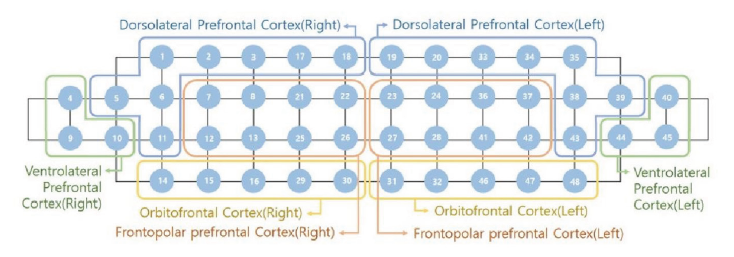Abstract
In this study, using NIRSIT based on f-NIRS, a task was created to develop a math anxiety test tool that can measure the difference in brain activity according to the level of math anxiety of participants. The purpose of this study is to secure the possibility of using a new device as a math anxiety test tool, and the reliability of the f-NIRS-based measurement task developed. The participants were divided into two groups according to the level of math anxiety, and the brain activity according to the level of math anxiety was measured using the NIRSIT device. Based on the measured data, brain activity was measured within and between the two groups with different math anxiety levels, and the correlation with the self-report survey score was analyzed. As a result of the study, there was a significant difference in brain activity within and between the two groups. In addition, a significant correlation was found between self-report survey scores and brain activity. This suggests that the measurement method using NIRSIT can be a new discrimination tool that can objectively and quantitatively measure math anxiety. Therefore, if the test method using f-NIRS-based NIRSIT is applied to various ages in the future, It can be used to diagnose math anxiety in students early.
Figures & Tables

Fig. 1. MBLL Brodmann area(OBELAB, Seoul)


